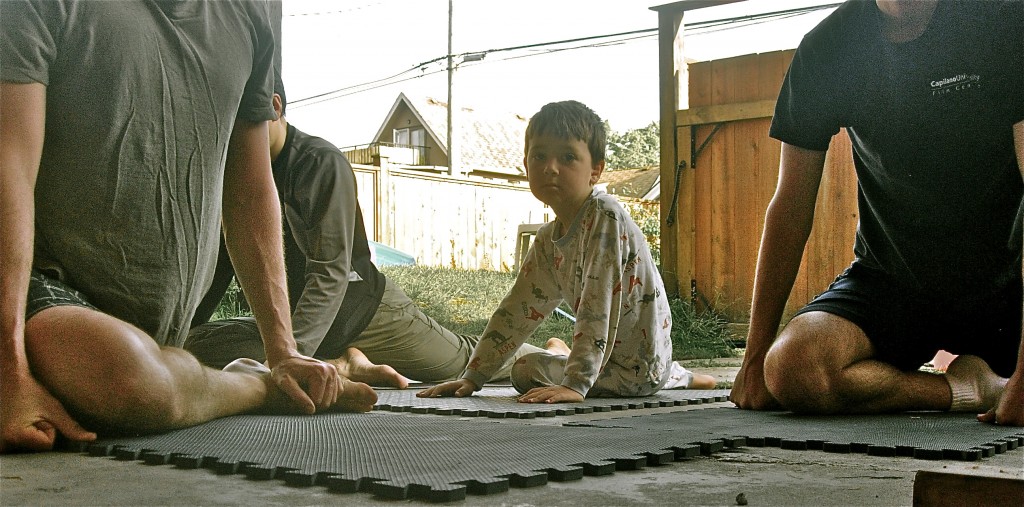If the No Intensity recovery days are the easiest to look over, then the Low Intensity recovery days are the ones we go out of our way to avoid.
“Oh man, I have to head to work early today. Traffics probably going to be super busy.” “Those curtains really needed mending.” “I’m in the home stretch of that project. I just need to buckle down and get it done.” “That fridge is looking pretty bare. I need to go shopping now.” “I haven’t had a shower in 5 days! Better get on that.” “I have all these emails sitting there. I should probably answer them.” “I’m just going to watch one episode of Battlestar Galactica and then I’ll get the session in.” “I’m pretty tired. If I do that session now, I’ll be going over a Low Intensity rating.”
Anything and everything will be a good reason to not get our Low Intensity day in. Why? Because it’s uncomfortable!
The Low Intensity day consists of mobility and deep release (via yoga/stretch poses). And it’s not uncomfortable because your are not flexible. The way we use the stretching and yoga in Clubbell Mass Evolution (as I learned it from my work with Circular Strength Training) is to compensate for the work we’ve done. The warm-ups and cool downs are not picked at random. They are specific to releasing the tension that builds from the body’s adaptation to the specific movements. So you can be the most inflexible person in the world. The “edge” where your tension starts, is where it starts. And where you begin.
No. It’s uncomfortable, because of what we are releasing. While the catch phrase “training mind, body and soul” (to denote a holistic approach) may get thrown around rather easily and loosely, it is absolutely true when done in congruence with each other. In the area’s of our body in which tension has been storing, often times over decades, there is an emotional element attached to that. Tension building in our body is not just from physical activity (or impact). Tension also comes as a physical manifestation of negative and stressful emotional reaction. When it’s positive it’s the opposite, we start to relax.
Much of this negative storage however is so deep that it requires not just mentally and emotionally clearing, but physically releasing. And when we go into the deeper poses, to release the “tension” in our body, we are also releasing unpleasant and uncomfortable emotional memories/associations. Yes, even if we haven’t felt effected or bothered by them in years. As humans, we are very good at coping and surviving. It’s both a gift and a test.
We may have no idea what is being released, what we are reacting to, where it’s all coming from or how to address it. And we don’t have to. We just have to be willing to meet it. Going to those places of tension and sitting with them at that edge where we meet discomfort (because we never push beyond that edge, beyond what we are ready for just yet), allowing the breath to guide us to release, we experience a cleansing. Like the opening of a dam. Upon release, not only does it move on, but great amounts of energy are generated. But the junk and gunk that’s been pooling, becoming trapped at the opening makes everything initially sluggish, difficult and messy. Once we allow it’s passing though, we feel the rush begin to come on. It can feel intimidating at first reconnecting with that as the full force of what awaits starts making itself evident. But on;y because we are connecting with something down deep, that’s been set aside and trapped for longer than it should be, as we draw closer to the very heart of who we were. Back to the very heart… of who we are.
Dare To Evolve,
Shane.



Last night I warmed up with intu-flow, and then went into the yoga poses – only doing two rounds as I was sweating bullets (yesterday was the hottest day of the summer so far). I found some problem areas I will need to work on extra in the future in both warm up and yoga work (shoulders/hips). One nice thing is that my bad shoulder I hurt years ago has been feeling better with the daily intu-flow and exercise.
I was just talking about this with one of the guys this morning, identifying the areas needing greatest release. There are a few key factors to bare in mind that can really help that process along.
If you have loads of time, there are all kinds of poses you could do to hit the problem areas. Most of us don’t have loads of time. But it’s surprising how much progress we can make focusing on just a few poses for 3-4 weeks. So which ones to pick?
Pick the one that:
– feels the best (that feels really good when you do it and like you get the greatest release from)
– and the one that feels the tightest.
You’ll come at the problem areas from the two ends of the spectrum. Hold these poses you’ve chosen for a minimum of a minute, progressively building to 2.5-3 minutes by the end of the 4 weeks (no, jumping to 3 minutes right at the beginning will not be better or speed up the progress). Ease into it.
At the end of the 4 weeks, pick 2 or three new poses from the two ends of the spectrum. Repeat.
Because the body is essentially one big muscle, releasing tension in the neck and shoulder can end up releasing a tight hip which was causing you knee problems. Not always starting exactly where we thought (or making any sense to what we think needs releasing).
Glad to hear the shoulder is feeling better! That’s what we want happening. Our bodies feeling better and stronger from our training.
Keep it rolling Brent!